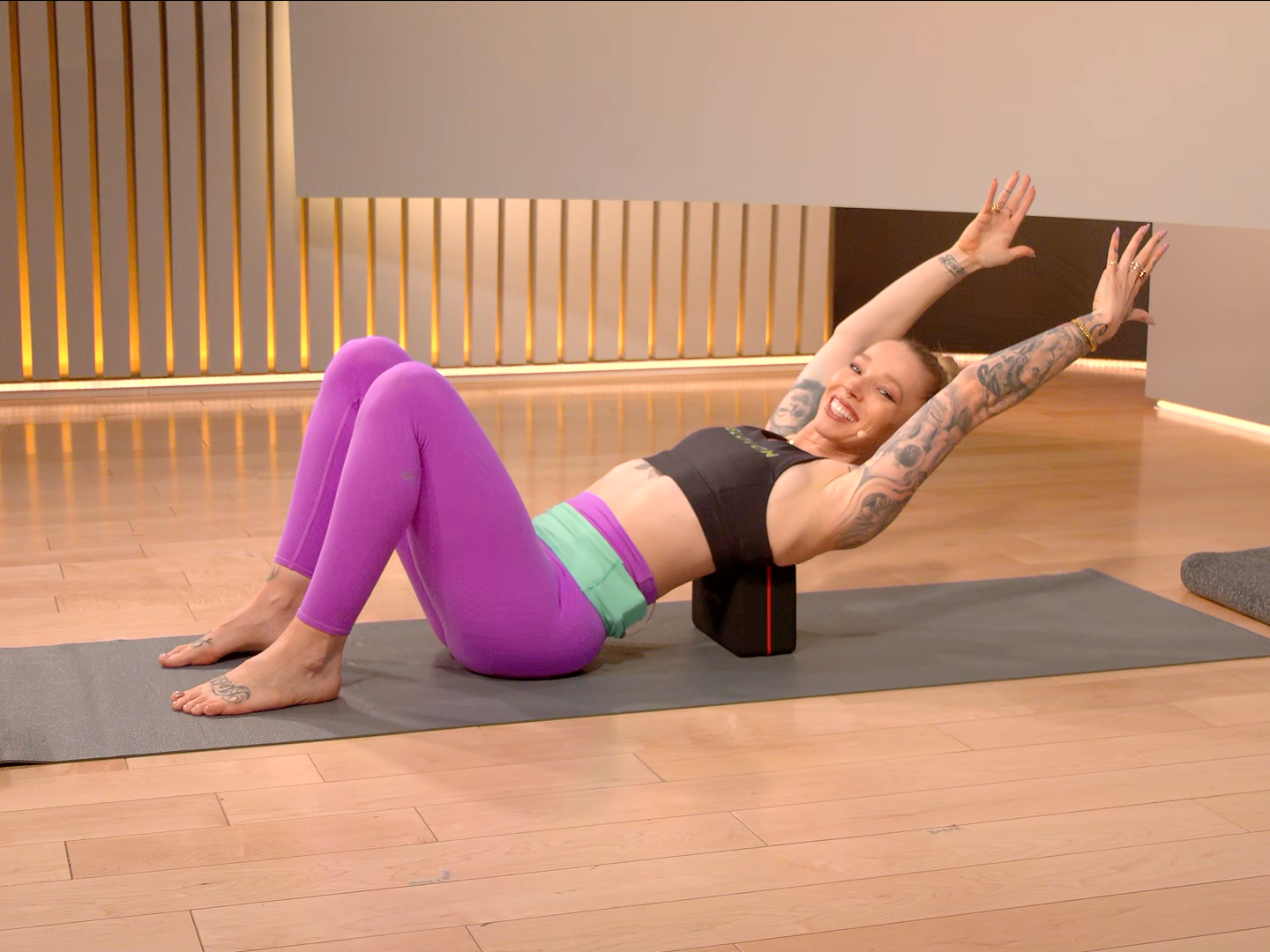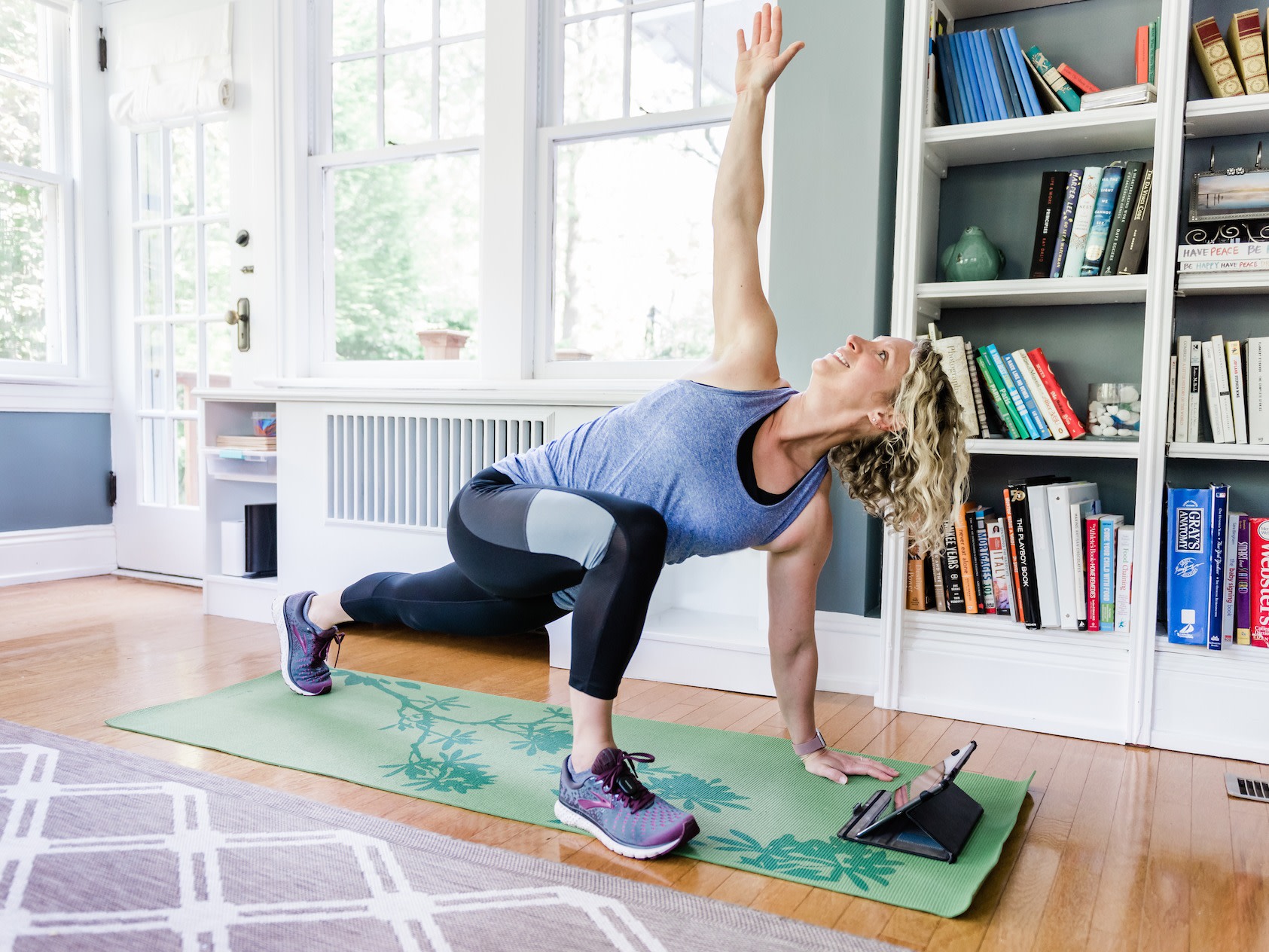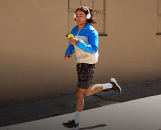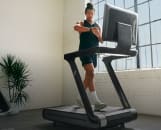Benefits of Mobility
Mobility vs. Flexibility
How To Improve Mobility Safely
The Best Mobility Exercises
How to Add Mobility Exercises to Your Routine
You’ve likely heard your fitness instructors talk about mobility exercises during class warm ups or cool downs. But what exactly does it mean? Mobility refers to a joint’s ability or capacity to rotate or move freely without stress on the body, explains Peloton instructor Callie Gullickson. If your shoulder feels “stuck” when rotating your arms as if you’re swimming backstroke, for example, your mobility in that joint may be less than ideal.
Mobility can affect not only your workouts but your day-to-day actions, from picking up your groceries to getting in and out of your car, adds Peloton Yoga instructor Kirra Michel. Because restrictions in any of your joints can cause your body to compensate, leading to injury, imbalance or pain, she says, it’s important to regularly incorporate mobility exercises into your workout routine. (This differs from working on flexibility, which is a more passive lengthening of your muscles.)
Here, we’ll dive more into the benefits of mobility and the best mobility exercises to add into your routine.
Benefits of Mobility
Wondering why mobility exercises are important in the first place? Improving your range of motion and joint control is an essential part of your daily movement, says Kirra. Here’s why.
Reduce Pain
“Our bodies all deal with general wear and tear over time, and healthy mobility helps us continue to move with ease,” explains Kirra. “No one wants to move with pain and discomfort—working on mobility will assist in countering that.”
That’s because improving your range of motion helps reduce pain associated with stiffness. The end result? You’ll be able to move freely and comfortably (which becomes even more important as you get older).
“If we feel stiff and tight, it can limit our range of motion and be uncomfortable or even painful to move,” continues Kirra. “I think of mobility as a way to help keep the joints lubricated. We want to work towards being well-rounded physically, so cardio alongside strength work and yoga for flexibility and mobility makes for a happy place!”
Reduce Injury
Maintaining a healthy range of motion also helps you avoid injuries, especially when working out. Most fitness-related injuries are from poor form or muscle imbalances, both of which can be addressed through regular mobility exercises.
“It is imperative not only when working out but when moving our bodies day to day,” says Callie. “When our range of motion is restricted, our form in a movement or exercise is affected, leading to compensation and injury.”
Promotes Good Posture
Whether you hunch over a computer all day or love to slump on the couch while watching Netflix, having good posture is essential to keeping your spine healthy. But chances are, you’re not very consciously aware of your throughout the day.
Enter: mobility exercises. Certain mobility exercises, like cat-cow or thoracic spine openers, can strengthen your back and open up your chest to prevent rounding.

Improve Athletic Performance
News flash: You can’t get better at certain exercises without sufficient mobility. “You will ultimately perform better in your classes and get more out of them,” explains Callie. “For example, in a strength class, if the mobility in your ankle is lacking, it can be difficult to hit the full range of motion for a squat, thus making it challenging to add more weight. However, if your ankles have good mobility, you’d likely add more weight and lift heavier since your form would be aligned.”

Peloton App
Access thousands of classes with no equipment needed.
Mobility vs. Flexibility
We get it—mobility is often confused with stretching. Both mobility and flexibility are ways to improve your range of motion and resist injury, but that’s about where the similarities end. Mobility, remember, is actively moving a joint through its full range of motion (key word: actively). Flexibility, on the other hand, refers to a muscle’s ability to lengthen passively, like you do during static stretches.
Need an example? Think about sitting on the ground with your legs stretched in front of you, and imagine actively flexing your feet to pull your toes toward you and then pointing your toes away from you—or even rotating your ankles in a full circle. That’s mobility. But once you bend forward and reach for your toes or use a strap to pull them toward you, that’s stretching.
How To Improve Mobility Safely
As with any new fitness habit, you should start your new mobility exercises carefully. Use these tips to improve your mobility safely.
Work With a Professional
A personal trainer, yoga instructor, physical therapist or mobility professional can get you started with proper form and relevant exercises. Make sure you share any past injuries or known muscle imbalances so they can suggest modifications if necessary.
Only Push to Your Limit
In the case of mobility, pain isn’t gain. If you start to feel sharp pain or a strain that just doesn’t feel right, stop the movement immediately. Mobility can be uncomfortable, but it shouldn’t be incredibly painful.
Prioritize Proper Form
When doing your mobility exercises, focus on form over everything. Watch yourself in a mirror and note whether your joints are in line, your spine is straight, and your shoulders are pulled back.
Don’t have a large mirror available? Try filming yourself on your phone and watching yourself back (this can be especially helpful when you compare your form on camera to the form of fitness instructors in mobility videos).
The Best Mobility Exercises
Ready to get mobile? Here, Kirra and Callie suggest several of their favorite mobility exercises for improving strength and range of motion.
1. Sun Salutations
“Sun salutations are a phenomenal, well-rounded way to get into a simple mobility routine,” says Kirra. “The forward folds and backbends address the front and back body, and the squatting benefits the hips, lower body and more.”
How To Do a Sun Salutation:
A. From a standing position, raise your arms out to your sides and over your head.
B. Exhale as you release your arms to either side and swan dive over your legs with a slight bend in your knees.
C. Inhale and keep your back flat as your hands graze your shins, then place your palms flat on the floor and step back into a high plank.
D. Exhale, lowering your chest to the floor before shifting into a cobra or upward-facing dog.
E. Finally, step or jump forward into a forward bend.
2. Malasana Squats
“This is another fave,” says Kirra. “Hips tend to be tight, so this speaks to those babies as well as the hammies and even the shoulders.”
How To Do a Malasana Squat:
A. Start standing with your feet wide apart.
B. Slowly lower your butt down toward the floor, keeping your spine long and chest up.
C. Bring your hands together in prayer pose and use your elbows to gently press your knees apart.
3. World's Greatest Stretch (aka Low Lunge Twist)
“This is great for your hips, hip flexors and the spine, as we all need a little more twisting in our lives!” explains Kirra.
How To Do World’s Greatest Stretch:
A. From a high plank position, bring your right foot to the outside of your right hand.
B. Keep your left hand planted and rotate toward your right knee, raising your right arm to the sky and opening your twist with a spinal twist.
C. Hold for three breaths, then rotate back toward center and return to a high plank.
D. Repeat on the opposite side.

4. Thoracic Spine Opener
“This is one of my favorites for the spine,” says Callie. “It helps with rotation in the transverse plane, opening up the thoracic spine. I often resort to it after a long day of sitting.”
How To Do Thoracic Spine Opener:
A. Start on your knees in a quadruped position.
B. Bring your right hand to behind your head with your elbow bent.
C. With your left hand planted, rotate your chest open toward the right—but only go as far as you can while keeping your hips square to the ground.
D. After 5 to 10 reps, repeat on the opposite side.
5. 90/90 Stretch
“It opens up the hip joints, opening one hip internally and the other externally at the same time,” explains Callie. “Opening your hips will improve squats, deadlifts and lunges as well as everyday activities such as getting dressed.”
How To Do 90/90 Stretch:
A. Sit on the ground in a wide straddle, with knees bend and heels on the ground.
B. Let your knees fall to the right so both are on the ground, and adjust your position until both knees are in 90-degree angles with your ankles and hips.
C. Turn toward your “lead” leg and lower your chest toward the ground, keeping your back as flat as possible.
D. Hold for several seconds, then come back up. Swap your position so your knees face the opposite direction and your other leg leads, then repeat the stretch.

6. Ankle Rocks
“I often put my hands on a wall and rock back and forth from my toes to my heels,” adds Callie. “Ankle mobility is one we often brush off but is vital in everyday life. Finding mobility in your ankles will help with balance, prevent trips and falls and benefit your form in exercises such as squats.”
How To Do Ankle Rocks:
A. Stand facing a wall for balance.
B. Rise up to your tiptoes and contract your calves, then lower your heels back down to the floor with control.
C. Then, put all your weight in your heels, flexing your toes toward your shins.
D. Lower your toes back down to the floor and repeat several times.
7. Cat-Cow
A classic for spine mobility, the key here is do cat-cow slowly and intentionally. Imagine each vertabrae of your spine moving one on a time, and pair your inhales and exhales with each movement.
How To Do Cat-Cow:
A. Begin in a quadruped position with a flat back.
B. Inhale and look up, leading with your chin.
C. Then slowly curve your back one vertabrae at a time, lifting your butt up toward the sky and dropping your belly toward the ground. Keep your spine nice and long.
D. Once you’ve reached the full expression of your “cow,” tuck your tailbone under and slowly begin to arch your back into “cat” position.
E. Finish by rounding your shoulders and tucking your chin toward your chest.
F. Repeat several times.
8. Scapular Pushups
Even if you’re still working up to a full pushup, you can do scapular pushups as a mobility exercise. The movement targets your shoulder blades and helps improve shoulder stability, which is a key for presses, planks, and regular pushups.
How To Do a Scapular Pushup:
A. Start in a high plank position (you can also modify by doing this on your knees).
B. While keeping your arms straight, squeeze your shoulder blades together as if you’re trying to pinch a pencil to hold it in place. Your chest should drop slightly toward the floor, but it’ll be a small movement.
C. Hold for a couple seconds, then drive your hands into the floor and round your shoulders and upper back.
D. Repeat several times.
How to Add Mobility Exercises to Your Routine
Now that you know the best mobility exercises for improving your athletic performance and strength, you might be wondering how, exactly, you should add them into your usual workout routine.
Good news: Mobility routines need only last a few minutes a day, and you don’t need any special equipment to improve mobility.“Hop into the yoga classes we offer on the Peloton App, as well as the warm ups and stretches!” suggests Callie. “Remember to be consistent. You can start with one exercise if you’re short on time and make it part of your routine. You'll notice not only your rides, runs, yoga flows and strength classes will benefit, but your body will just feel better.”
Or, add these mobility exercises into your warm-up or cooldown (you’re remembering to warm up and cooldown regularly, right?) “All the movements I suggested are dynamic warm ups you can add into any routine,” notes Kirra. “Stretching is great for after class. Start making mobility a part of every workout you do. And find movements you like. If you are going to do it, find a way to enjoy it!”
Related Articles

Stretching + Mobility
Peloton’s Ultimate Guide to Mobility Training

Stretching + Mobility
Why You Should Care About Ankle Mobility—Plus 7 Exercises to Try

Stretching + Mobility
Why You Need to Build Shoulder Mobility—and 6 Exercises to Do Just That

Stretching + Mobility
Release Tight Hip Flexors with These 10 Must-Have Mobility Moves
This content is for informational and educational purposes only and does not constitute individualized advice. It is not intended to replace professional medical evaluation, diagnosis, or treatment. Seek the advice of your physician for questions you may have regarding your health or a medical condition. If you are having a medical emergency, call your physician or 911 immediately.
Level up your inbox.
Subscribe for a weekly dose of fitness, plus the latest promos, launches, and events.
By providing your email address, you agree to receive marketing communications from Peloton.
For more about how we use your information, see our Privacy Policy.








